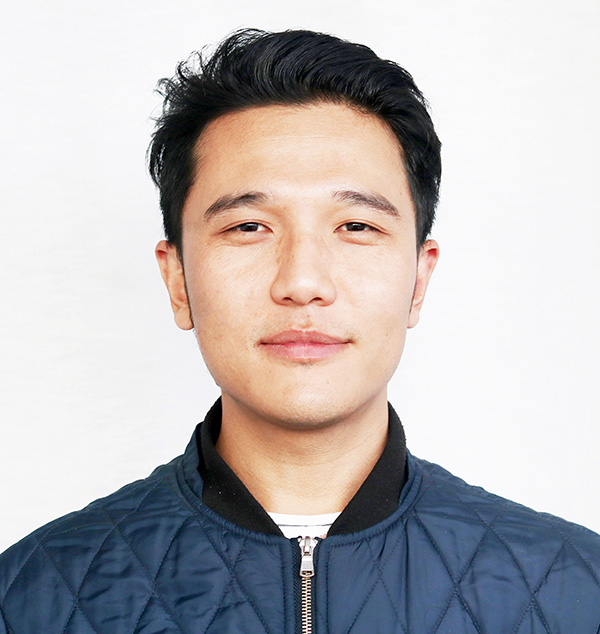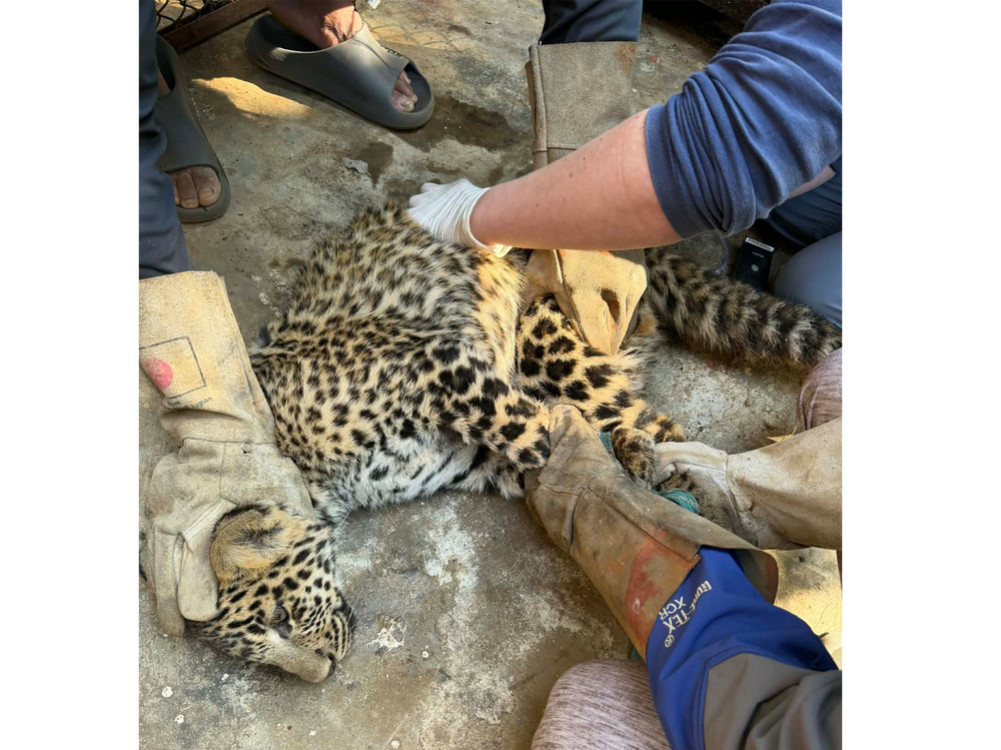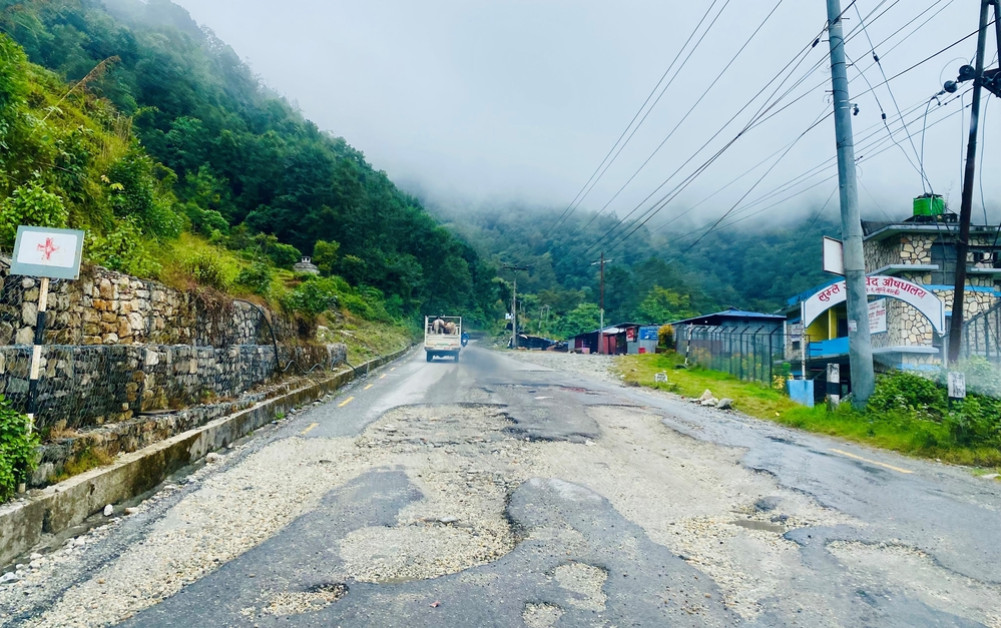Gandaki Province
When freezing cold shuts down classes, these schools migrate south for the winter
It’s a warm February afternoon and the last of the day’s classes are over. A group of children play football at the Lekshed Tsal School in Tanahun, a few chasing 14-year-old Pema Wangyal as he heads straight for the goalkeeper.
Tsering Ngodup Lama
It’s a warm February afternoon and the last of the day’s classes are over. A group of children play football at the Lekshed Tsal School in Tanahun, a few chasing 14-year-old Pema Wangyal as he heads straight for the goalkeeper. Pema dribbles skillfully past the defenders and as he nears the goal, he chips the ball and sends it flying above the keeper’s head—and right into the goal post.
This is the first winter Pema has spent away from his hometown of Ghiling in Upper Mustang. This is also the first winter that Pema is actually attending school. In the hills of Tanahun, the winters are milder and the sun is warm. In Upper Mustang, winters can be unbearable and attending school regularly is next to impossible.
Pema’s school, the Shree Janajyoti Basic School in Ghiling, along with the Ghami Solar School in Ghami—both located in Upper Mustang’s remote Lo-Ghekar Damodar Kunda Rural Municipality—have migrated to the Tanahun-based Lekshed Tsal School this winter. It was the two schools’ first-ever winter migration, which started from January 1 and ended on February 25.
Winters in Lo-Ghekar Damodar Kunda Rural Municipality, which sits at 3,500m above sea level, are harsh. By mid-October, temperatures start dropping, and the cold builds with each passing day. In November, the mercury hits single digits, and at night, plummets to below freezing. By December, snow starts pounding the rural municipality. And for a few weeks every winter, a biting cold wind blows, further intensifying the chill. Such harsh weather conditions make it impossible for the area’s schools to remain open.

No good winters
Given these harsh climatic conditions, every year, the local administration sets aside a budget for government-run and community schools in Upper Mustang to migrate south for the winter. But until this winter, the budget, teachers say, has been so small that it left many schools with no option but to close for the winter months.
“I have been teaching at Shree Janajyoti for 12 years now, and for the last 11 years, we didn’t have enough money to afford a migration,” says school headmaster Nyima Thinley Gurung. “Until last year, we closed our school from mid-December to the beginning of March and gave our students and teachers a long winter break.”
The only other year the school managed to stay open during the winter was in 2007. Shree Janajyoti wouldn’t have dared to stay open had it not been for a brand new hostel building the students moved into that year.
The new hostel building was built by Maitri-Ratna Nepal, a Kathmandu-based NGO. “When we came to Ghiling, the village was in desperate need of a new school building, as the existing structure was in a state of disrepair,” says Tenzin Chomphel, field advisor for Maitri-Ratna Nepal. “In 2002, we opened a kindergarten, the first ever in Upper Mustang, and in 2006, we built a new school building.”
 In Upper Mustang, the Shree Janajyoti Basic School is perched on a hillslope. PHOTO COURTESY: Shree Janajyoti Basic School
In Upper Mustang, the Shree Janajyoti Basic School is perched on a hillslope. PHOTO COURTESY: Shree Janajyoti Basic SchoolChompel said that over the years, the school has also added a clinic, a dining hall, a kitchen, a well-equipped science laboratory and a staff quarter, funded by donors from Germany, the US and the UK. The school and the hostel’s annual operating costs are funded primarily by Patta e.V., a German non-profit, with additional contributions from the Nepali government. The kindergarten and clinic’s annual operating costs are covered by the American Himalayan Foundation.
But despite the new infrastructure, the region’s harsh winters remained intolerable for the school.
With temperatures reaching as low as -10 degree Celsius, the school’s taps froze, along with the water inside, and the pipes broke. The school faced an acute water shortage and had to melt ice for water to cook, clean, and for students to wash up.
“Our cooks couldn’t prepare meals on time, students didn’t get to wash their faces, do laundry and brush their teeth. Even the water inside the toilet bowl froze,” says Nyima, recalling the ordeal from 12 years ago.
The school ended that year’s winter classes on January 15, and it hasn’t opened during the winter since.
“I never knew that our school had stayed open till mid-January in 2007,” says Tsering Dhundup, a fifth grader. “Even when it opened till mid-December, it was so cold that our lips would crack and bleed.”
In order to have water for washing up before bed, students would leave a full bottle between the blankets to prevent freezing throughout the day, says Tsering.
With no indoor heating in classrooms, the only way students and teachers could keep themselves warm in Lo-Gekhar was by shutting all doors and windows. Even then, students said the cold still seeped in.
“I don’t like attending classes in winter because writing becomes so difficult. My hands keep trembling and that really messes up my handwriting. Every few minutes, I have to rub my hands to keep them warm,” says Tsering. “At nights, to stay warm in our hostel, we sleep in a group of three in a bed made for one. It’s not very comfortable, but at least we remain warm through the night.”
To avoid the cold winter, every year—until this year—the school closed from mid-December to the beginning of March.
But for Shree Janajyoti Basic School, sending their children home on a long winter break has had adverse repercussions. When winter starts, many young adults from the villages travel to India to sell sweaters—the main source of livelihood for villagers during winter. Those who do stay back in the villages are mostly the elderly.
Most old people, say teachers, do not really trouble themselves with whether their children study at home or not. And many children have to help with household chores.
“Children do not have a very conducive learning environment at home. And when they come back to school after spending nearly three months at home, many of them, especially the younger children, have trouble recalling chapters that were taught before the vacation,” Nyima says. “Teachers have no choice but to revise chapters that were already taught. This easily takes anywhere from two weeks to a month.”

South for the winter
Migrating the school during the winter, according to teachers, solves multiple problems. But the most crucial one is: children do not have to bear freezing temperatures in the north, and they get to study.
“Ideally, we would like to migrate for three months from December to February every year. This will allow students to give their final and first term exams in an environment that is less challenging,” says Nyima. “We can then give children a month’s holiday before and after migration. That way, they won’t be away from books for long.”
But migrating an entire school is easier said than done. Getting the budget to do so is the first challenge. “Even though the government sets aside a budget for schools to migrate for the winter, it was so little that only schools with a few students could actually make the move,” says Lobsang Chofel (Raju) Bista, the president of Lo-Ghekar Damodar Kunda Rural Municipality, and a resident of Ghami village.
Six out of eight schools in the rural municipality have made the move to Pokhara twice before, making this winter their third migration. But these were schools that always had few students. This year, the six schools had a total of just 23 students.
For the municipality’s two other schools—Shree Janajyoti Basic School and Ghami Solar School, with an annual average student count of 60 and 40 students, respectively—migrating with the government-provided budget was impossible.
But last year, Lobsang set aside a budget of three million rupees from the municipality’s annual budget to ensure that all eight government schools get to migrate for the winter.
The eight schools were divided into two groups: two English-medium schools and six Nepali-medium schools. The English-medium schools, with 117 students and 19 teachers, received Rs 2.1 million from the budget, and the Nepali-medium schools, with 23 students and 17 teachers, received Rs 900,000.
“The budget was divided on the basis of the number of students and teachers,” says Lobsang.

Finding space
With the budget secured, teams from Shree Janajyoti Basic School and Ghami Solar School went to Pokhara in search of a place to move in. When the team scoured Pokhara, they realised that finding the right place was anything but easy. Since students are supposed to live with the school during the migration period, the team had to find a place that had enough classrooms, rooms for students to sleep in, a kitchen large enough to cook for more than 130 people, ample open spaces for children to play in, and an adequate water supply.
“We inspected a lot of places. Some had enough rooms but didn’t have enough space for children to play,” says Jamyang Tenzin Gurung, president of Shree Janajyoti Basic School. “Some didn’t come with beds, and if we were to buy beds for all our students, a huge chunk of our budget would have gone into that. Some buildings had everything, but had a very limited water supply, a much-needed requirement.”
The team then visited Lekshed Tsal School, which is around 30 kilometres from Pokhara, in Tanahun district. The school had everything that the two schools were looking for. It had huge playgrounds, dorm rooms with bunk beds, a kitchen equipped with cooking utensils.
The Lekshed Tsal School management even agreed to extend its own winter break by two weeks—till the end of February—to accommodate students from the Upper Mustang schools.
“We bought 27 extra double bunk beds and bedding for all 117 students and 19 teachers. This being the two schools’ first winter migration, we had to buy a lot of things and ended up exceeding our initial budget by four and a half lakh rupees,” says Lobsang.
The six Nepali-medium schools, meanwhile, moved into the premises of a vacant government school in Hemja, Kaski.
Municipality officials say that the experience of managing the first winter away taught them a lot.
“Planning ahead is key. We will begin talking to government schools in Pokhara months in advance when the schools migrate again later this year. We will also have to sort out a budget for the schools to migrate regularly from now,” says Lobsang. “I don’t want any schools from my municipality not being able to migrate because we didn’t plan properly.”
But the benefits of migrating schools for the winter extend far beyond children being able to attend school through the winter.
Moving to the Tanahun-based school, teachers say, they now have much easier access to school supplies. “There’s a big bazaar just a 15-minute walk from the school. The bazaar has lots of shops that sell educational materials. In Upper Mustang, we have to travel all the way to Jomsom, which is four to five hours away by jeep, just to buy the most basic supplies,” says Nyima.
Another benefit of winter school migration, the teachers say, is their students get a chance to learn about things like zebra crossings, modern buildings and supermarkets—things that they’ve only read about in textbooks since these things don’t exist in Upper Mustang.
“It’s difficult for teachers to make children understand something that they aren’t exposed to,” says Nyima. “But here, we can take our students to a supermarket and actually show them what things look like.”
For instance, one of the school’s teachers described how difficult it was for him to explain to his class, back in Upper Mustang, what a pomegranate was. His students had never seen a pomegranate. It wouldn’t have been a problem, he said, for a teacher in Pokhara, where students have most likely seen and eaten a pomegranate.
By allowing children to escape the harshest spell of Upper Mustang’s winter, the school migration, says Tenzin from Maitri Ratna, will definitely reduce the number of cases of parents pulling out their young children from local schools to send them to study in other cities and towns.
“The problem with sending children away to study is that these children will grow up without having any real sense of connection to their place of origin, their culture and their traditions,” says Tenzin. “The migration provides our children with not only an opportunity to study during the winter, but also exposes them to the modern world while still staying connected to their roots.”
To give students as much exposure as possible, teachers of the two schools take them on excursions most Saturdays. “We took our eighth grade students to Phewa Lake and to the International Mountaineering Museum. They loved it,” says Nyima. “One Saturday, the entire school hiked for two hours to the Dor Barahi Temple and got to witness a Hindu ritual there, a first time for most of our students.”
For the students, this type of exposure can be invaluable, but away from their villages, the children tend to get homesick. Back at the Tanahun-based school, it is now late evening and the playground is empty. There is a nip in the air. As Pema returns to his dorm room after brushing his teeth, he thinks of home—and the cold— back in Upper Mustang.
“I hope the school migrates next year, too,” Pema says. “But for now, I am looking forward to going back home. I already miss it.”




 9.68°C Kathmandu
9.68°C Kathmandu





